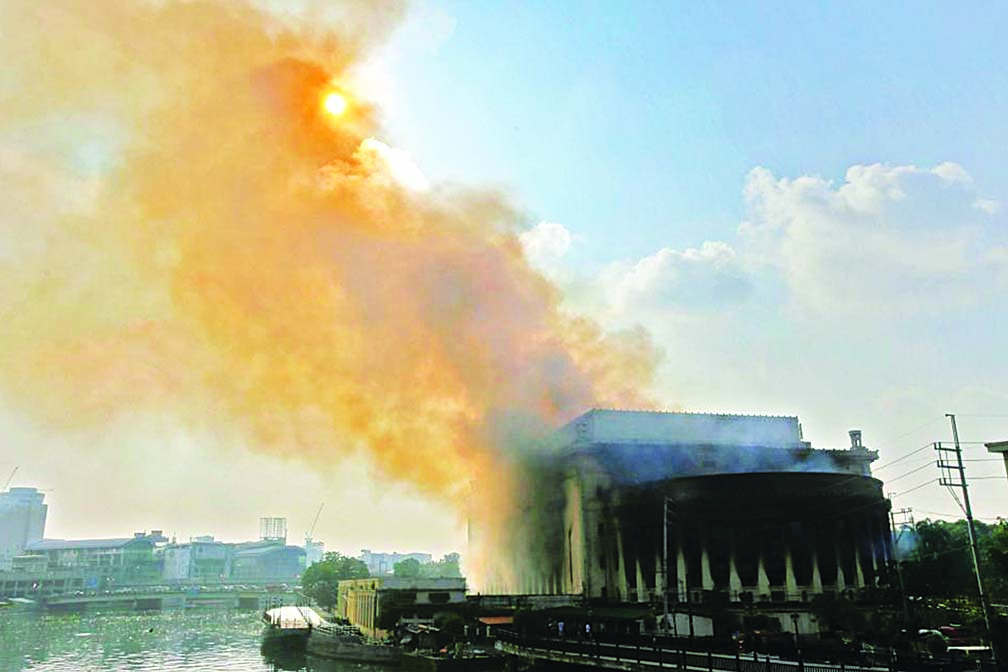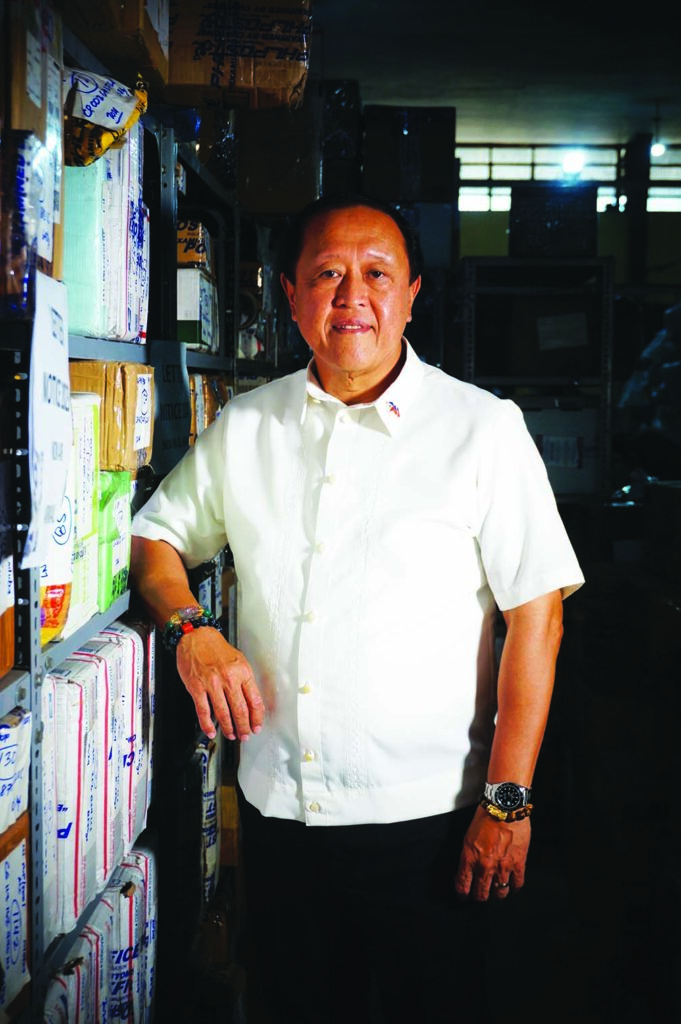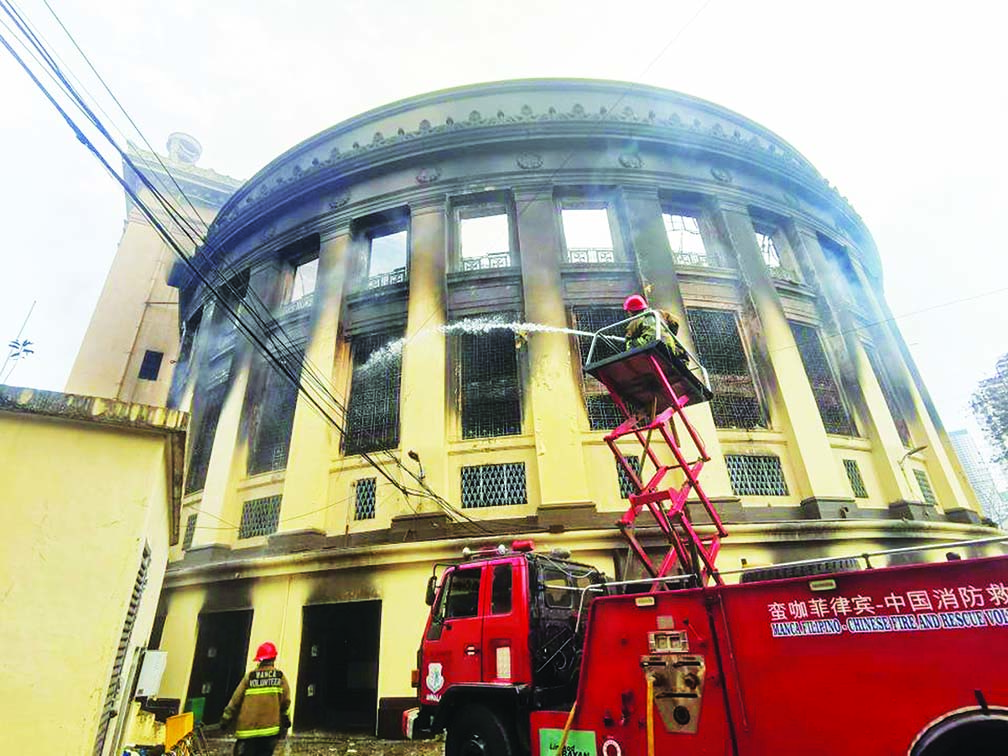The late Sunday evening of May 21, 2023 oozed with the heat of summer for the most part of Manila. But along the banks of the Pasig River in Lawton, Ermita, the air reeked from the suffocating stench of a raging blaze, as thick, dark smoke billowed and blackened the iconic walls of an almost century-old edifice.
The historic Manila Central Post Office was on fire. And for more than seven hours, unstoppable flames gutted all five stories of the building, from its basement, all the way to its top floor.

At around 7 a.m. the following morning, the fire was declared under control. More than P300 million worth of property went up in smoke. And 18 persons, mostly firefighters, were injured.
One of the country’s oldest post office was no more and its employees, both former and current, touched memory and recalled the many days and hours when they sorted the mountains of letters and parcels from here and abroad, inside its now scorched walls.
Outside, on the wide, level ground facing its 16 ionic columns, dances and parades were once held, juxtaposed with countless labor protest rallies and student demonstrations.

Philippine Postal Corporation (PHLPost) Postmaster General and Chief Executive Officer Luis D. Carlos remembered that the building “truly had a certain vibe.”
“It’s as if it were talking to you, when you enter it. For many, it’s not just any ordinary building. There’s something in it that’s quite difficult to understand,” Carlos said.
LAYING DOWN THE PLAN

After the fire, Carlos wasted no time in taking action. He elicited the help of other interested individuals and stakeholders, creating an inter-agency group to attend to the Post Office’s immediate rehabilitation.
There were many who wanted to help—representatives and experts from the National Commission for Culture and the Arts (NCCA), the National Historical Institute (NHI), the National Museum, the Department of Tourism (DOT), and the local government of the city of Manila.
The aim of the group is to collaborate and discuss how to rehabilitate the Manila Central Post Office building. The DOT, through Secretary Maria Esperanza Christina Garcia Frasco, and the City of Manila through Mayor Honey Lacuna, were also included in the group.
Carlos related that from that point on, the group proceeded with the conduct of the Detailed Architectural Engineering Study or the DAES to determine the type of intervention to be done, the state of the structure of building (if it is still in good condition), among other questions.
The conduct of the DAES was then subjected to bidding. At this juncture, the Tourism Infrastructure and Enterprise Zone Authority (TIEZA), through Tourism Secretary Christina Frasco, gave P15 million to bid out the DAES.
“This is a government project so we cannot just hire a contractor or service provider since it is not allowed. A group won the bid, and even had the report sent to Australia and the DAES will be sent back to the Philippines. Once it’s here, we will know the extent of damages, the best course for intervention and how much cost it will entail in rehabilitating the Manila Central Post Office,” Carlos said.
He continued by saying that once cost is determined, another report will follow—the Detailed Architectural Engineering Design (DAED).
“This will show what the internal layout will be, but definitely, the whole building, particularly the external parts, will be restored to its former iconic glory,” Carlos mentioned.
GSIS INSURANCE
However, he narrated that even prior to the discussions on rehabilitation, there was already the issue of insurance, particularly with the Government Service Insurance System (GSIS).
Carlos admitted that at first, there were no clear points when it came to the insurance issue, and PHLPost was given P100 million by the GSIS.
He lamented that there was some sort of miscommunication in terms of who will conduct the assessment of the damage incurred by the building.
“We thought or likened it to the situation of a car that was damaged, wherein damage assessment will be done by the insurance company. But GSIS disagreed. We were informed that it should be us that should have the damage assessed,” Carlos added.
Aside from that little misunderstanding with the GSIS, Carlos was bothered by the rumor that there were certain groups or individuals, (which Carlos did not name), who are thinking of putting up the building or the whole property for sale to those interested.
This was too much for Carlos strongly declared. He stood his ground in saying that the Manila Central Post Office is “beyond the commerce of men” and thus is definitely not for sale at any amount.
“That iconic building is for the Filipino people and is definitely not for sale. The building is also a strategic part of the tourism circuit in that part of Manila, where you can see from there the various landmarks and other tourism spots like the Metropolitan Theater, the Intramuros area, downtown Chinatown, and of course there’s the Manila City Hall. That building must really stay. If you remove it, all other things will be gone,” bemoaned Carlos.
SPECIFIC TIMELINE
For all the harsh talk about selling the historic building, Carlos remains positive about the outcome of the Manila Central Post Office’s rehabilitation, from funding to the actual design.
When asked about a specific timeline to the completion of the rehabilitation, Carlos said the inter-agency group is looking at finishing the entire rehabilitation process and opening to the public again the Manila Central Post Office by 2026. By that time, the venerable structure will be exactly 100 years old.
Admitted Carlos: “Rehabilitating the Manila Central Post Office building will be a gargantuan task but it is definitely not insurmountable. Everyone in the group will be “all hands-on-deck.”
Carlos said, that the whole job will be done meticulously, even painstakingly, since every minute detail in the building will be restored, and that entails a lot of work.
He said that most parts of the building, including the lions, which were supposedly guarding the building, and even the windows, which, apparently, have a specific count in terms of numbers, have to be done carefully and accurately.
Another part of the rich history of the building lies beneath it. Recently, narrated Carlos, a group of geologists from the University of the Philippines determined that the building was formerly used as a “carcel” or prison during the Spanish time.
“They even found old Chinese porcelain estimated to be from the 1700-1800 era. The place really has a rich cultural heritage so we really have to keep it intact,” Carlos said.
He further expressed that it has been a joy to watch people enter and exit the Manila Central Post Office building simply for the joy of being there.
Carlos stressed the importance of keeping the Post Office and the people connected in other ways; to treat the Manila Central Post Office, not merely as a venue for sending mail.
KADIWA POP-UP STORES

He introduced the idea of establishing post offices in other areas as a go-to place where the public can buy important produce such as vegetables and other food items through the Kadiwa pop-up stores. It’s PHLPost providing support for the programs of the Department of Agriculture, Carlos said.
“When we started the first one in Mariveles, Bataan, we noticed that people came in droves precisely because of the affordable produce available, and even the Post Office employees benefited because they were able to buy affordable produce as well,” he said.
The target, Carlos explained, is to hold a Kadiwa pop-up store every Friday and hopefully it will be done as well in all major Post Office branches nationwide, even at the Manila Central Mail Exchange in Pasay.
Since it’s held only every Friday, Carlos said employees have the opportunity to buy the produce they want at super low prices before they go home. Also, having the pop-up stores create substantial foot traffic, even in old Post offices.
“The farmers that sell the produce can increase their margins because they don’t pay for the selling space. Right now, there are three pop up stores, the one in Mariveles, then Tarlac and Olongapo, which opened March this year. We’re also opening one at the government center in San Fernando, Pampanga, in Candaba, Pampanga and, as the other areas mentioned, at the Central Mail Exchange,” Carlos said.



